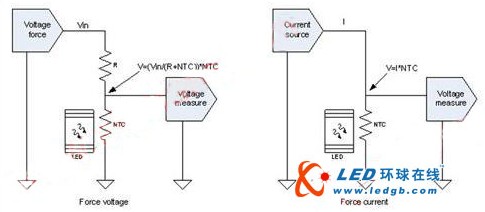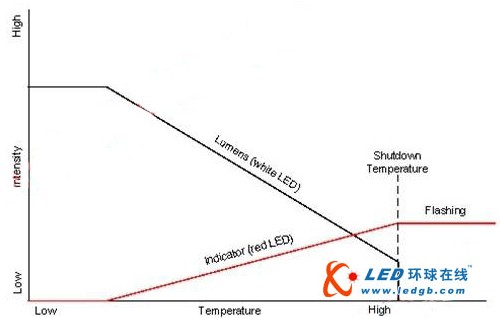Thermal management is the most difficult, demanding and costly design part of new LED lamps. Failure to perform adequate thermal management will result in catastrophic consequences such as lighting failure or fire. However, thermal management of LED lights is the most complex, demanding and costly part of the overall design. This article will explore how to implement negative temperature coefficient (NTC) thermal management to maximize the safety of LED designs and significantly reduce power consumption.
Among traditional incandescent bulbs, the filament that is not in direct contact with anything is the only source of heat. For LED lights, the LED is the light source, and the heat dissipation of the LED is directly in contact with the LED bulb. This direct contact is governed by the way the LEDs are connected to the driver circuitry. In order to achieve heat dissipation, heat must be released from the LED and driver circuits or managed effectively, and this is the basic premise for keeping the LEDs working for a long time.
To understand the importance of thermal management, we might consider an application that replaces the installation of LED lights on general lighting sockets such as wall or ceiling lights, and uses wall switches to control the LEDs. Since the heat dissipation of most standard lamps, such as wall or ceiling lights, is primarily dependent on thermal convection or airflow, the heat dissipation of this application is less than ideal for LED lamps.
Failure to perform effective thermal management can result in catastrophic consequences such as frequent replacement of failed LED lights or building fires. The use of intelligent LED light control to monitor the temperature of the LED light is a relatively simple thermal management method, and because the LED light can reduce the power when the temperature rises, the safety will be greatly improved.
NTC thermal management
The basic principle of the NTC circuit is to improve the safety of the LED lamp and reduce the design complexity by monitoring the temperature of the LED lamp. As the temperature increases, the controller reduces lumens and thereby keeps the LEDs within safe levels. In other words, when the temperature rises, the lumen is reduced, and conversely, when the temperature drops, the lumen is increased.
We can detect the temperature change of the LED lamp by detecting the voltage on the NTC. The detected voltage is directly related to the temperature of the NTC, and the resistance of the NTC decreases as the temperature of the NTC and its peripheral circuits increases. There are two basic ways to determine temperature using NTC.
Method 1: Use NTC in a voltage divider circuit that enforces a known voltage in the system, and then measure the voltage on the NTC node. When the NTC temperature rises, the resistance decreases. A decrease in resistance will result in a change in the divider ratio. The voltage at the NTC node also drops as the temperature increases.
Method 2, forcing the known current to pass through the NTC and measuring the voltage on the NTC. When the NTC temperature rises, the resistance decreases. According to Ohm's law, the reduction in resistance will change the voltage on the NTC node. If the resistance is reduced and the current remains the same, the voltage on the NTC node will also drop.
In terms of improving operation and improving safety, the two methods of monitoring the temperature of the LED lamp are simple and straightforward to implement. Figure 1 is a schematic diagram of two methods of using an LED as a source of temperature rise.

Figure 1: Two basic methods for determining temperature using NTC.
Is the temperature too high or is the LED fault?
When the lumen output of the LED lamp drops, it is important to know whether the LED output is degraded due to an excessive temperature environment or because the LED has failed. We can use an indicator that shows the drop in lumens to determine the cause of the drop.
The lumen drop in the system shown in Figure 2 is indicated by a low power red LED. When the system is at maximum lumen output, the red LED turns off; when the LED temperature rises, the lumen output drops, and when the lumen output drops, the red LED turns on. As the lumen output continues to decrease, the intensity of the red LED will increase accordingly. When the lumen output drops to its lowest intensity, the red LED will turn on completely.

figure 2